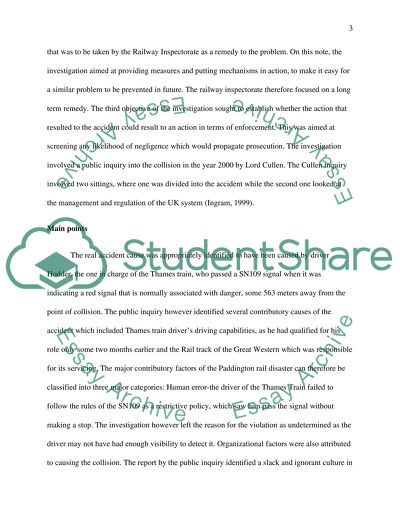Cite this document
(“The Paddington Rail Disaster Essay Example | Topics and Well Written Essays - 1750 words”, n.d.)
The Paddington Rail Disaster Essay Example | Topics and Well Written Essays - 1750 words. Retrieved from https://studentshare.org/sociology/1475268-write-a-sociological-account-of-paddington-rail
The Paddington Rail Disaster Essay Example | Topics and Well Written Essays - 1750 words. Retrieved from https://studentshare.org/sociology/1475268-write-a-sociological-account-of-paddington-rail
(The Paddington Rail Disaster Essay Example | Topics and Well Written Essays - 1750 Words)
The Paddington Rail Disaster Essay Example | Topics and Well Written Essays - 1750 Words. https://studentshare.org/sociology/1475268-write-a-sociological-account-of-paddington-rail.
The Paddington Rail Disaster Essay Example | Topics and Well Written Essays - 1750 Words. https://studentshare.org/sociology/1475268-write-a-sociological-account-of-paddington-rail.
“The Paddington Rail Disaster Essay Example | Topics and Well Written Essays - 1750 Words”, n.d. https://studentshare.org/sociology/1475268-write-a-sociological-account-of-paddington-rail.


